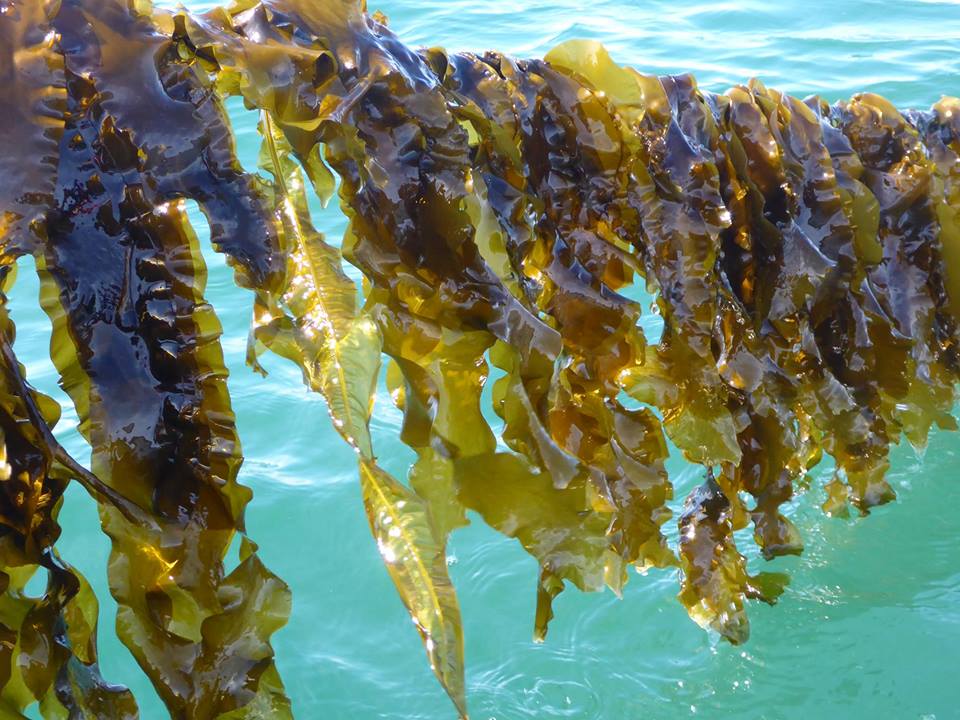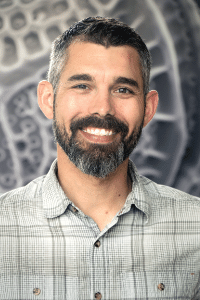
Faculty Spotlight: Doug Rasher, Senior Research Scientist, Bigelow
by Liz Theriault, Maine EPSCoR Student Writer

for Ocean Sciences
With the new EPSCoR RII Track-1 Grant, Molecule to Ecosystem: Environmental DNA as a Nexus of Convergent Research for Maine’s Coastal Ecosystems (Maine-eDNA), comes new faculty members and principle investigators to lead interdisciplinary groups of researchers. For Maine-eDNA, Dr. Doug Rasher has taken on the role of Project Lead for a research goal: Species on the Move: Patterns and Determinants of Range Shifts, where he and his team are investigating the ways in which Maine’s coastal kelp forests are changing in the face of climate change.
The Gulf of Maine (GoM) is one of the most rapidly warming bodies of water on Earth. That means that the species living in those waters are being affected by this changing environment.
“We are losing some of the species that have historically been here, and we are gaining new species that traditionally were not found here. As the region becomes warmer and more hospitable to warm-water species, they are moving into the region,” said Rasher.
“We want to understand how this reshuffling of species is reshaping our coastal ecosystem.”
The GoM is also unique to Rasher’s research, as it contains some of the southernmost Atlantic kelp forests, which span from Rhode Island to Baffin Island, Canada. Rasher uses eDNA to investigate how warming water and invading species will affect these kelp forests. Unlike more traditional investigation methods such as scuba-diving surveys, eDNA does not rely on sight detection of an animal or plant. Instead, eDNA is able to detect the arrival or presence of a species through its genetic signature in the water, even when there’s a very low abundance.
“Environmental DNA as a tool will allow us to see these species shifts as they are unfolding, rather than only noticing them after they’ve happened,” explained Rasher. “This will allow us to make observations and conduct experiments that tell us why and how [the changing environment] is altering the ecology of the system.”
The use of eDNA technologies is also aiding Rasher and his team in developing forecasting models that can predict shifts in the distribution of fish and algae before they even happen. An “early warning” system such as that would be extremely advantageous for regulatory agencies, as well as aquaculture and wild-capture fishery industries, who could then make decisions about how they are going to embrace or mitigate any impending changes.
As Rasher moves forward in the grant’s five-year life span, he is optimistic and excited to work with such an interdisciplinary team. Rasher’s team includes ecologists who collect observations and eDNA samples through scuba diving, molecular biologists who are developing the tools needed to answer the team’s questions, and oceanographers and computational biologists who are developing models to understand how changing temperatures and currents might impact the arrival of new species.
“This project is very interdisciplinary, which is what is really exciting about Maine-eDNA. It brings together a really diverse group of people to ask pressing questions,” said Rasher. “Generally speaking, interesting questions in science tend not to fall neatly within a single discipline; they tend to span the boundaries between disciplines. So you need scientific collaboration to answer those questions.”
Rasher also uses those collaborations in the classroom. He is teaching classes at Colby College, including “Seafood Forensics: Uncovering Fraud in Ocean Food Systems,” and “Coral Reef Ecosystems.” His class “Coral Reef Ecosystems” is co-taught with Ben Neal of Colby College and Nichole Price, another Bigelow Laboratory researcher and senior personnel on Maine-eDNA. Students go to Bermuda during their winter break to gain handson experience collecting field data and conducting laboratory research. His other class, “Seafood Forensics,” teaches students about the unfortunate and common practice of mislabeling seafood.
One of the only ways to identify mislabeled seafood is DNA forensics (in other words, DNA metabarcoding of fish tissue samples), which is the same molecular approach used in many projects within Maine-eDNA. One of Rasher’s frequent guest speakers in his class is Peter Countway, a molecular biologist at Bigelow Laboratory and Co-Lead of Theme 2. Countway provides the class with an in-person demonstration of how eDNA tests can be used to correctly identify the fish sample in question.
Moving forward in the near-term, Rasher is kickstarting his field work this summer, along with continuing to develop specialized eDNAtools that will allow him and his team to detect kelp forest organisms—from kelp to large fishes—with just a small water sample.
